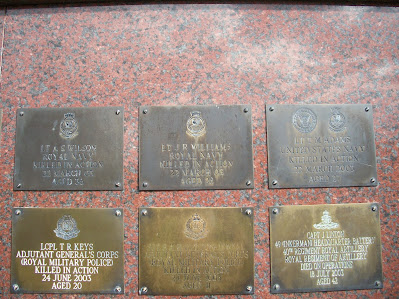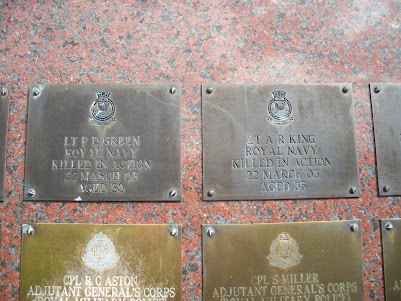Of all the warships in the Royal Navy that have gone down in
history, the story of HMS Barham is one that has been told many times, not
least because her demise was caught on camera so horrifically and a completely
unrelated incident involving the supernatural led her to be in the news for
what can only be described as a bizarre case of modern day witchcraft.
Barham was launched on New Years Eve 1914 on the River
Clyde, one of five Queen Elizabeth class battleships that was 643 feet 9 inches
long, around 33,000 tons and carried an impressive armament of four 15 inch
guns on two forward turrets. With over 1000 crew on board, she was built in a
time when the Dreadnoughts were the up and coming warship, more powerful and
heavily armoured than anything launched before, and Barham was one of those
ships. Not least because she had been launched as the world was plunged into
war just a few months earlier.
After she was commissioned in October 1915 she found herself
at the Battle of Jutland on 31
st May 1916 which was both a victory
and a disaster for both sides. She was struck by German shells several times
which left 26 of her crew dead and dozens more injured. Her war service
continued and she was present at the final surrender of the High Seas Fleet in
1918.
21 years later she was part of the Mediterranean fleet when
the Second World War was declared, so her mission now was to head back to
British waters and join the home fleet. As she neared the UK at the top of Ireland she was met by several
escort destroyers to add to the others that were already in a protective screen
around her. But in the early hours of 12th December 1939, as the
fleet reached the Clyde approaches off the Mull of Kintyre, one of these
escorts, HMS Duchess (below), was struck by the Barham and sank. 136 of her crew were
killed, there were only 24 survivors. (For more information on this my book
Collision in the Night tells the story of the Duchess.)

So Barham now sailed around the Atlantic and Mediterranean assisting with operations which included a
U-boat torpedo striking her causing enough damage for her to put about and head
for repairs. Soon back to sea she took part in several engagements where her
guns were blazing against the enemy forces and in November 1941 she was heading
out of Alexandria
hunting for Italian convoys.
On 25th November the submarine U-331 saw the
fleet and fired four torpedoes at the Barham, three of which struck the ship in
quick succession. The huge battleship rolled over slowly as crew fought to
escape the sinking ship, but at this exact moment the warship Valient was doing
something that would propel the death of the Barham into history. On board the
Valient was a cameraman filming the ship for Pathé News.

The Barham was rolling right over onto her side when
suddenly the magazine blew up and hug
e pieces of the ship flew in every
direction. The sight was shocking and the smoke enveloped everything around it.
By the time the smoke had clearend, Barham had gone. 862 of her crew were
killed, the nearby warships managing to rescue 487 survivors, two of whom would
die later.
Meanwhile in Portsmouth
a woman named Helen Duncan was conducting a séance in front of an audience and
announced that a sailor had come to her and said that the warship HMS Barham
had been sunk. The military immediately took an interest in this because
nothing official had been released yet, therefore how she got that information
was a mystery (this could have been simply hearing from a relative who had
received an official death notice before it was made public). She was arrested
and became the last woman in Britain
to be tried for witchcraft and fraudulent spiritual activity.
The Barham wreck has never been found, but she lies
somewhere in the Eastern Med. Maybe some day we will gaze upon her once again.
Memorials to the Barham are dotted around the country at
various war memorials, one being at the National Memorial Arboretum which I
visited in 2020.










